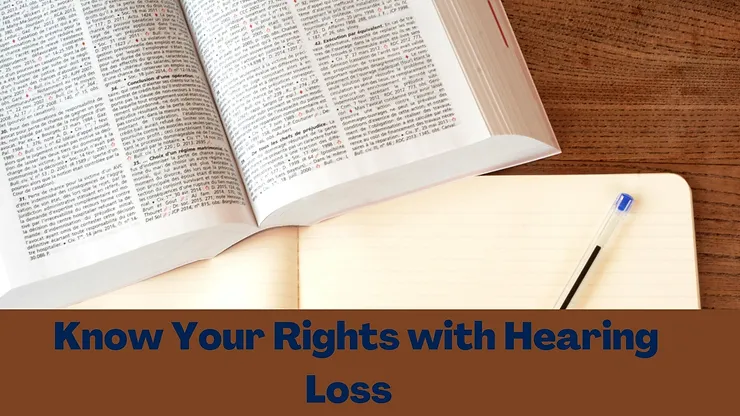
Hearing loss is one of the most pervasive medical conditions that people navigate today. Impacting nearly 1 in 5 people, hearing loss is the third most common chronic condition experienced in the U.S. Impaired hearing results in a reduced ability to hear and process sound, presenting various challenges that can impact personal and professional responsibilities.
Fortunately, there are various laws and regulations that are designed and implemented to protect people with hearing loss. In addition, these policies require greater accessibility of public spaces, work environments, technologies etc. These legal standards are designed to support people with hearing loss navigate daily life with greater ease, improving quality of life! Major pieces of legislation to know about include:
1. Americans with Disabilities Act (ADA): One of the most comprehensive and significant pieces of legislation, the ADA was passed in 1990. It offers substantial rights including: prohibiting job discrimination, accessibility of public spaces, and telecommunications accessibility.
The ADA prohibits discrimination on the basis of disability. The act defines disability as a physical or mental condition that significantly impacts major life activities – hearing loss falls under this general definition. In addition to preventing discrimination, as written by the U.S. Department of Justice, the ADA, “guarantees that people with disabilities have the same opportunities as everyone else to participate in the mainstream of American life — to enjoy employment opportunities, to purchase goods and services, and to participate in State and local government programs and services”.
Another critical right required by the ADA is accessibility in public spaces. The ADA mandates accommodations in places open to the public – banks, movie theaters, restaurants, convention centers, transportation centers, stadiums, classrooms etc. Specifically requiring that any public space, “where audible communication is used to provide direction or critical information an assistive listening system is required to be provided for people with hearing loss”. There is a range of assistive listening systems that can be used which are designed to make it easier to hear (example: hearing loops).
The ADA also expands accessibility around telecommunications in a few ways. It requires telephone companies to provide relay services that are always available. Additionally, it requires that public service announcements utilize closed captioning services.
2. CVAA – 21st Century Communication and Video Accessibility Act: passed in 2010, this law is essentially an updated version of the ADA telecommunications legislation. It requires that accessibility extend to modern technologies in an increasingly digital world. A few important highlights include:
-
Communication services must be accessible for people with disabilities. This includes services like email, instant messaging, video services etc.
-
Expands the requirement for closed captions services which now have to be provided on devices smaller than 13 inches (smartphones, laptops etc.)
-
Devices that record TV programs also have to provide closed captions
3. Air Carriers Access Act (ACAA) – this legislation focuses on requirements for airports, airlines, and air travel. The ACAA prohibits airlines from discriminating on the basis of disability, requires air services to be accessible, and mandates airlines to provide accommodations for passengers with disabilities. A few highlights of the ACAA include:
-
Information and reservation services have to be accessible by providing a text option or other way to communicate with people who have hearing loss.
-
Screens at airports and on flights must provide closed captions
-
Safety assistants must be provided if requested
-
Permits service animals
4. Hearing Aid Compatibility Act (HAC): initially passed in 1988, the HAC act requires the Federal Communications Commission (FCC) to ensure that phones are hearing aid compatible. A few important updates to this act have been implemented in recent years:
-
2016: the FCC adopted new standards to be met by wireless handset manufacturers as well as mobile service providers. These standards expand accessibility for wireless communication services for people with hearing loss.
-
2017: volume control standards for wireline handsets were updated to enhance voice amplification.
-
2020: all wireless handsets that are hearing aid compatible are required to include volume control settings for people with hearing loss
These policies are among the various forms of legislation that offer protection and accessibility for people with hearing loss. Learning about the rights you are entitled to allows you to advocate for your hearing needs!
If you have experienced changes in your hearing and would like to learn more about your hearing health, contact us today! We provide comprehensive hearing health services and we look forward to supporting you on your journey to better hearing.
